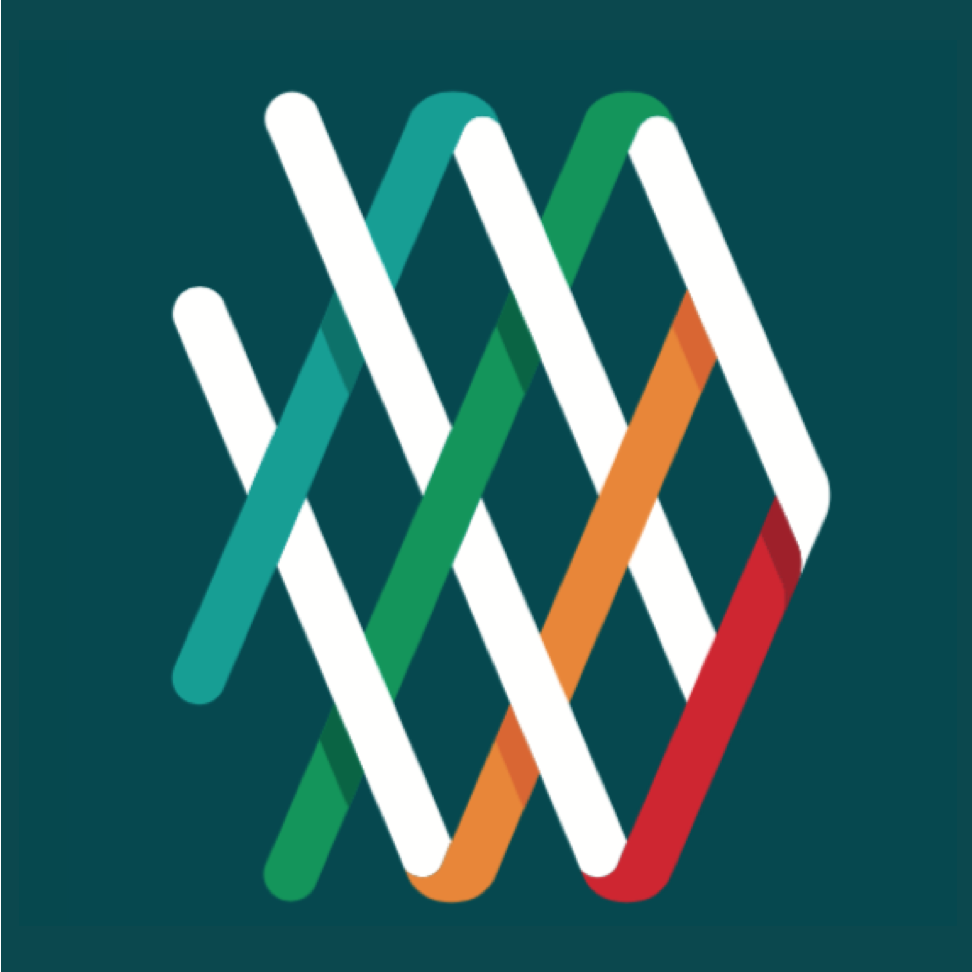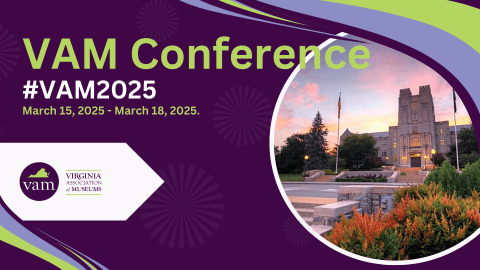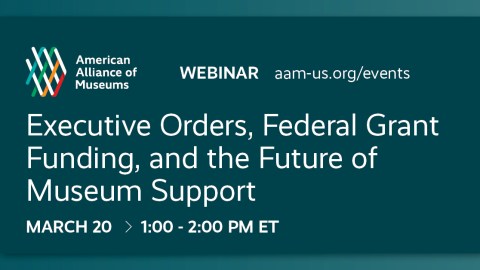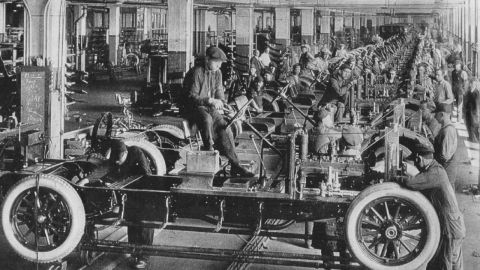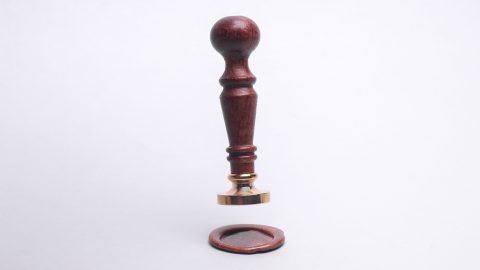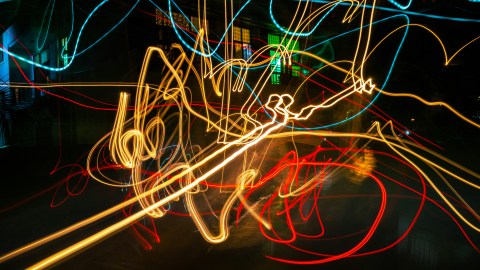This is a recorded Tech Talk from the 2020 AAM Virtual Annual Meeting and MuseumExpo. Presented by Microsoft
Transcript
Catherine Devine: Hi everyone, my name is Catherine Devine and delighted to be with you here today talking about the digital transformation framework that we use as a structure to really talk about the opportunity for digital transformation and to really influence the digital strategies of organizations that say it’s to work those out.
My name is Catherine Devine again, as I said,I’m with Microsoft worldwide education, but many of you will know me from the museum industry. I spent a good seven or eight years at the American Museum of Natural History in New York leading digital there.
In my role at Microsoft. I’m responsible for thinking about global strategy for libraries and museums and what that really means isWhat am I, what are the needs of museums and libraries globally, and how can I Were they trying to achieve and how can I best help them with looking at solutions that are very specific to this sector and how they used in the setup?
Hey, we’re here to talk about digital transformation andYou know, this is one of those terms, that means many things to many people. And so, I’d love to, you know, put a definition around it and this is certainly one of the drivers as to as to why we created thisThe idea is that digital transformation is really about leveraging digital to achieve some outcome.
And, and I think that’s important because sometimes digital can be seen or technology can be seen as technology for technology’s sake.
We need to be on social media, because that demonstrates that we are digital we are, we need to use virtual reality or augmented reality or an app or something.
Because it demonstrates that we are digital, and I think it gets away from what is the point of leveraging those tools. It’s much more about what is the outcome you’re trying to achieve. And how does digital allow you to achieve an outcome that you couldn’t otherwise have achieved.
And so, getting a little deeper on that, you know, I like to think of it as new ways of working so digital transformation allows for new ways of working, new ways of engaging new or reaching new audiences. All of these things, increasing efficiencies in your organization, but all in the pursuit of service of the museum’s mission. So, it’s more aboutWhat is the best way to achieve the museum commission and then how can digital as a tool in the toolkit, allow me to achieve that? So, it gets away from thisYou know either all conversation that often happens about digital versus non digital on which is best. Because really, both our tools and we now have a wider tool set to work with and that’s a good thing. And then, of course, now we have that which allows us to achieve more than we could otherwise have achieved.
And sometimes it’s going to be a non-digital tool that is the best scenario and sometimes going to be a Digital Tool and quite often, it’s actually bothSo just to sort of recap on that digital is a tool in the tool set and I really want us to think about it that way rather than thinking about it asYou know, we need to have an interactive, we need to have an app, we need to do we need to understand why we want these things and how this particular tool will allow us to achieve it in a way that we wouldn’t otherwise have been able to.
So, key here is technology enables the mission is not about enables the mission is not about technology for technology’s sake. So, let’s move on to our framework. Before I stop there. I want to really talk about why we developed this framework.
One of the things that I really noticed in my time in museums and continues today.Is that there’s an extensive compensation, which is focused on the visitor experience and how can digital help the visitor experience. And I think that that’s because it’s a very tangible hands-on easy to relate kind ofApplication of digital. So, it’s what we call visible technologies, not to be too obvious. But the idea is that I can really see that an app adds to the experience, although you can debate that, just bear with me to adds to the experience because it allows you to provide something in addition to the experience deliberately the app that would otherwise be difficult. And I really think a really great example of that is presenting content in multiple languages on an app. And clearly, it’s very difficult to do that in more than one or two languages on a world label.
But really here, what I want to do is expand the conversation beyond visitor experience. I think we’ve spent a lot of time there. We’ve made great progress as an industry, but then it should now be about how can we move forward and take a much more holistic approach.
So, let’s move on to this framework, it really has essentially four pillars and then each individual pillar has another four layers.Layers sorry four segments and we’ll get into that as we kind of like drill down through here and I sort of explain what I’m really looking at here.
But essentially these four pillars are at the highest levels 30,000-foot level all around.Advanced discovery visitor experience the operations of the organization and the environment Sunday, which runs but let me just go one layer deeper on that advanced discovery is really all about collections and research. So, it’s all about how can digital help further our cause.Around research and collections visitor experience is all around. How can we enhance that visitor experience both those people who are visiting the museum and also those people who will never visit the museum but all the way through the experience as well?
Operations is around running the organization, what are all the essential things that you need to run an organization and how can you do that in the most seamless way and then the environment is really about physical and digital environments. What are the best physical and digital environments to manage those buildings in the physical space and the collections in those buildings?And the environment in which they’re in. And then in the digital space is much more around what is the right infrastructure that allows you to scale and achieve this reach and level of security that you need. And we’ll go into this in more detail.For drawing down. This is the full model when you take each of these four pillars and go down to that next layer. I’m not going to spend a lot of time here because we’re going to move on and actually look at each of these pillars separately. So, moving on to the first one which is discovering so really, there are four things here. One is around collections management. So, we’re all aware that collecting museums have generally collecting collections management systems of some form or another.Or varying degrees of sophistication, but essentially, it’s about tracking the collections and the metadata and everything about those collections. Then there is the idea of digitization and digitization has been pursued to varying degrees and different institutions of the different reasons.
But I think we’re increasingly seeing now that digitization has moved beyond just creating a digital record, but actually thinking about to what envelope be used, will it be used for the purpose of supporting research, right, because now I can actually land items in the collection and the form of a 3D model that I may not have been able to you know, because of the nature of it because it’s very rare or precious, etc that, you know, it’s very difficult to make available to a lot of people through London’s and things like that, and the other purpose is really about this idea of extending the visibility of collections out to the general public audience in a way to help them understand the role of collections in museums and also for them to understand and explore those connections and create their own learnings out of that.And then we have researched for these research institutions which many museums are particularly those who have collections, is this whole idea of, you know, how can we support research in the in the best possible way, and particularly for those that are very computationally heavy
Clearly, the more compute power you have the faster you can get to results, and you know if you’re talking about a resolve that would take a certain amount of time on your own infrastructure, but had certain time to you know you had to book enough time to actually access it to share results, all of those kinds of good things versus is a much more accessible technology that you can now reach in and conform those computations in like 10% of the time, or even 1% of the time and clearly that’s a significant value add and this is where I talked about this idea that, you know, digital is about doing things more effectively achieving things that you couldn’t in a physical space where we have constraints in the current world.And digital allows us to break through those constraints, then it becomes a prime opportunity for transformation, and I really love to reframe the conversation in the museum sector round.Around digital in that way rather than, you know, digital being a very visible technology. And finally, the one that I’m very excited about is discoverability I think for many years, we’ve had collections. We’ve had metadata. We’ve had described collections. But really, we’ve never been able to mine the knowledge in collections in the same way that we currently are today in 2020Artificial Intelligence allows us to very, very rapidly describe tag translate transcribe create connections create neural networks about connections across one individuals collection across institutions collection. And obviously, by extension, across the world’s collections. And then you start to get very exciting.
And this, you know, for me as a spine-tingling moment around, well, we’re not going to find things that we would not have discovered as a human rights for maybe decades hundreds of years, even thousands of years, but we can now find them now, because the issue is not that the knowledge is there and the connections are not there. It’s just that it’s physically you know too much volume for one human to be able to able to discover. And so, I think that this is the real power of digital.
Let’s move on to the visitor experience so it’s about this is a something we’re all very familiar with and can hopefully be grounded in. But I also want to add a few more elements here. So, we’ve talked a lot about this space around the connected experience. And this is really the idea of before, during and after the visit. That we often talk about, and how can we create that continuity of data and seamless experience. And so many of the conversations around customer journey or visitor journey have tended to focus in this area and this is great, great progress would love to do it in more places beyond the walls. Become very relevant lately beyond the walls is around the idea of people who never come to the museum for one reason or another. It could be about accessibility. It could just literally be physical time place distance, it could be poverty, it could be childcare can be all sorts of reasons why people don’t come but it’s about not as limiting our thinking to people who are visiting but people who is still important to our mission that we want to reach? And its funds, how can you use digital to engage with those in a number of different channels and number of different experiences. So, I feel like we’re familiar with those conversations versus familiar with the education conversation, but I really like to look at here is like modern learning methods.
And modern learning management systems and how can we start to leverage those kinds of technologies here to further the reach of educational programs andAnd then their programs like Skype in the classroom, which really allows museums to visit any classroom in the world or the vice versa classes to visit museums. And be able to experience things that they would not otherwise have been able to experience. And then finally, you know, it’s life-changing thinking here is about exhibitions, so exhibition development is important in many museums and he we talked about often the idea about putting technology into an exhibition. But what I would really love us to get into the conversations to flip that around into how can we use technology to make the exhibition development process. More efficient more iterative all of those good things. And so, what I’m talking about here is things like 3D visualization of an exhibition space, which allows you to experience and step into that experience and really see what the exhibition will be like, and allows you to iterate clearly in a more faster way but also in a more informed way other than finding out, you know, using scale models and then finding out a couple days before an exhibition. What’s really going to look like and feel like and so this is really about enhancing that development of exhibitions process.
Let’s move on now to operations we do, which is really, as I said about actually running the organization, it’s here that he had room to sort of call out for items which is really around fundraising ticketing constituent management. These are very strong conversations everywhere. But then there was also, you know, finance, marketing HR Procurement customer service is visitor services, all of these things together. And no, you can achieve that without bringing all those things together in as frictionless in a seamless and asEasy away as possible. And so, there are great systems today that that really look at those and then I just like to sort of finally add on here, collaboration, which really gets into how the staff work together and how can you bring teams together. To work together on lots and lots of different projects and a really seamless way, which is what we call anytime, anywhere, working but not just at the individual level but at a team level on a number of different topics. Anonymous get to environments. I, I find this piece, particularly interesting as well, along with the discoverability of collections, but he was starting to get into the idea of adding intelligence to a physical building.
So, it’s about at its base level managing the environment and clearly there is a significant cost savings to be achieved from just managing the environment in an automated way. And also bringing all of the data points together about that environment into one. So, the dashboard, so that you can really manage the hot what’s happening at a holistic level across the whole building but it’s more than that, it’s increasingly more than just the building that people are visiting, but it’s also about where the collections is stored and how can we monitor and preserve collections in the optimal environment for those collections to avoid us seeing degradation of collections.And so, you know, increasingly, there are conversations happening as new storage facilities of collections are being built that really started to have very sort of deep conversations about what are all the ways that we can monitor those environments for humidity, temperature for light for pests for all of the things that you can imagine that you want to manage water.
All those things that you would want to measure in an environment in a way that best preserves and optimizes the collections for the longer term, and then we get into safety and security so many of our buildings are very large buildings. And so, there was an, an obviously very priceless artifacts. So how do we actually, you know, manage that in the optimal way that is both good from a cost point of view, but also from an effectiveness point of view. And so, you know, there are great technologies that are around today, which also build on the idea of a smart buildings that really get into the idea of how can you detect security incidents that could be something like a collection on and being not where it’s expected to be, or it could be sensing that there are a group of people running or it could be a weather event? So, it could be about bringing all of this and aggregating together and providing it in an intelligent way. So, let’s take the example of where people are running you would not expect a group of people to start running in a museum. And so, if you detected that at least it would give you a much faster response that it might otherwise have when a security guard is required to see and report that in and get attention and all those good things. Because we’re making a conclusion there and you know it can only go so far that that a group of people writing maybe indicative of a concerning event. So, it may not be as well. But I mean, generally speaking, you’re going to find large groups of people running in an environment like that.
So as an example of these kinds of things. But really, the idea is about bringing all the senses and data points together.To get an accurate view of what is happening in the building. And I think under a covert environment we’re definitely becoming more and more of that where we’re interested in how we can manage and monitor crowds and keep those environments site as well.And then finally, new construction and this is really a nod to the idea that as new museums are being built new wings, etc. We really need to be considering the digital elements of that at the same level that we considering the physical elements. So really this idea that physical and digital work together, what I call the digital layer. And but the idea that these things work together and can’t be designed separately. And so, it needs to really be a part of all new construction.
So, with that, you know, I’ll wrap up. But just to say, you know, I really find it hope you find this framework helpful. I’m really interested in any comments, any areas that you feel that we’ve missed in here and welcome some questions and discussion, but also before we leave just want to encourage you to join if you’re interested, the LinkedIn community that we have on Microsoft libraries and museums community which has around 400 members at this point across the globe. I’m certainly looking to welcome anybody else who wants to attend and thank you.
Well, hi everybody. Thank you for joining today and happy to take questions in the last sort of eight or nine minutes that we have. I’m just going to check some of the questions that we have and oh, yes. So let me just answer the question from Kathleen Hawk, which is can you mentioned the LinkedIn group name again?
Yes, so it’s on. It’s on LinkedIn if you if you search in LinkedIn for Microsoft’s libraries and museums community.Or alternatively reach out to me on LinkedIn.Catherine Devine again and I will, I will send you the link. You’re also always welcome to email me as well, which is Catherine Devine at Microsoft.com. But anyway, one way or another, you feel if you can’t find it in reach out to us really want to encourage as many people to join us as possible.
We have another question here.
Is there a particular product or products that all work together in some of these suggested ways?
No, but I would love that to you know, one of the things I don’t want to sort of over set expectations here. But, you know, one of the things I would love to see, is this what many people call Museum in a box.And I’m not sure that that’s the right term. But this idea of this idea of, you know, really taking museums out of having to worry about all of the technology and getting into a scenario where everything just works together and it’s seamless and that museums can focus on what they really do best, right. And in that’s a dream and you know part of my role here is about trying to elevate solutions in this in this space. And so, you know, clearly, Microsoft has solutions, but many of us also think that we also see Microsoft is a foundational technology. So, it’s about other people building on top of that. So, part of what I’m also trying to do is create this ecosystem of partners who will build out solutions and try his best to talk about this idea was a framework as a sort of integrated system and making this as accessible and easy as possible. So, it’s a long answer to say unfortunately, there isn’t. At this point, but it’s certainly as close to that goal as we can get is something that I’m looking to achieve.Jared us. We just scratched the surface here.
What are some good sources for learning more?
And that’s really, yes. So maybe I’ll give you some background had Jared and anyone else who’s interested in thisWe at Microsoft have been focused on libraries and museums. Now for just a little over a year. I joined move from Museum of Natural History just over a year ago. And we are very much in a buildup phase at the moment. So, this is something that I I’ve developed as an uncountable larger Microsoft Education Team is something that I’ve developed and tried to socialize this much and adapt and iterate with the community. And try to build out more and more detail about this. I would love to get to some points where it’s a, you know, each of these topics is 16 of them each of them goes much more detailed and he has video and things like that. And maybe even maturity assessments, probably not the right word, but what I really mean is an ability to assess like you know what does.
Where are you now and what could a utopian view look like and how to get there? And then what are the solutions?
So definitely we are actively working on building this more and more out for now I’m very happy to talk to anybody, one on one. Which it makes sense. And I do have another level of detail. Which is available. It’s actually, I’ve got the links in it on our booth, but also reach out to me if you can’t find those reach out to me again at on LinkedIn or on email and I’m very happy to sort of share those with you.
So we have another question from Shelby Chandra, he said, who else in this digital transformations, who else is in this digital transformation space along with Microsoft?
That’s hard to say. I mean, I think Google has Google Arts and culture. I would suggest, and of course, I’m going to be biased here, I would suggest that that is just a narrow focus. And that’s a very good application, but it’s also a narrow focus on just one piece of this which is the idea of exposing collections. So, to my knowledge, and I’m happy to be corrected on this to my knowledge, there is no one else looking at these health as holistically, as we are. And when I’m looking at that I’m looking at the big players, Google, Apple, Amazon. And Microsoft. So, if that doesn’t answer your question and you meant something different, please let me know.
The question from a listener would this be practical useful for small museums or museums within universities, if so, what would be some pros in those situations?
Yes. Well, I would like to think that this is this applies equally to all museums. I think the key here is not to view this you must do everything in every piece or every pillar. And it’s not the idea that you do that. But the idea is that when you’re thinking about what you want to achieve that you at least consider these things if you may well say, this is not a tool that makes sense for me for my museum and my situation or, alternatively, it may be that you think, oh, there’s something that I hadn’t thought about the one that I like to use all the time is probably my two favorites and you might have picked up from this is discoverability, this idea of being able to knowledge mine collections is something that, you know, may not make sense for your museum but I personally think that in some of the really large collections, it’s very exciting. Another one is smart buildings. If you don’t have a really, really large building it may not make sense, but still there are some things that will. And the idea is to really prompt you and then the idea is that there is different solutions at different layers. So, the size of your museum determines the complexity of the of your need, and your solution. So, Alyssa, I hope that it can be useful for small museums, as well as certainly designed with that in mind, to be a museums of all sizes. And so, but feel free to reach out to me if that doesn’t answer your question.
And we have a question from Chris. He says he joined late. But he could I quickly list the pillars?
Yes. But feel free to go back and look at the video because I really love you to get more into the detail. The, the pillars are advanced discovery, which is all about collections, the enhanced visitor experience, which is all around everything around all of the visitors that you’re dealing with. Of all different types of lifelong learners education through schools regular visitors. People who are outside of the museum who don’t come to visit the museum. Then we have dynamic operations, which is all about running the museum, so it’s all you know I particularly list fundraising and ticketing and constituent management, but there’s also other things that I don’t raise there, such asFinance HR marketing all of those kinds of things. And then finally, intelligent environments, which is all about the environment that you need to manage both physical and digital. So, in the physical space. It’s really about buildings and smart buildings and, you know, something like smart buildings will save 30% of your energy costs. And then there’s also cloud infrastructures secure cyber security infrastructure physical security infrastructure. All of those so, so once again I think we’ve got 30 seconds left. And then I’ve run out of questions. So that’s great. Reach out to me anytime, as I said,Again, a plug for the LinkedIn community really hope you join we’re publishing a lot of great content they’re trying to engage a conversationAnd I’m very interested in what everyone’s input is what if the words are and what the current priorities are. And of course, as we know in in 2020 it’s been quite the year and so those things are changing constantly and we want to be on top of that, so thanks everyone for your time.
And reach out to me. Thanks. Bye.
